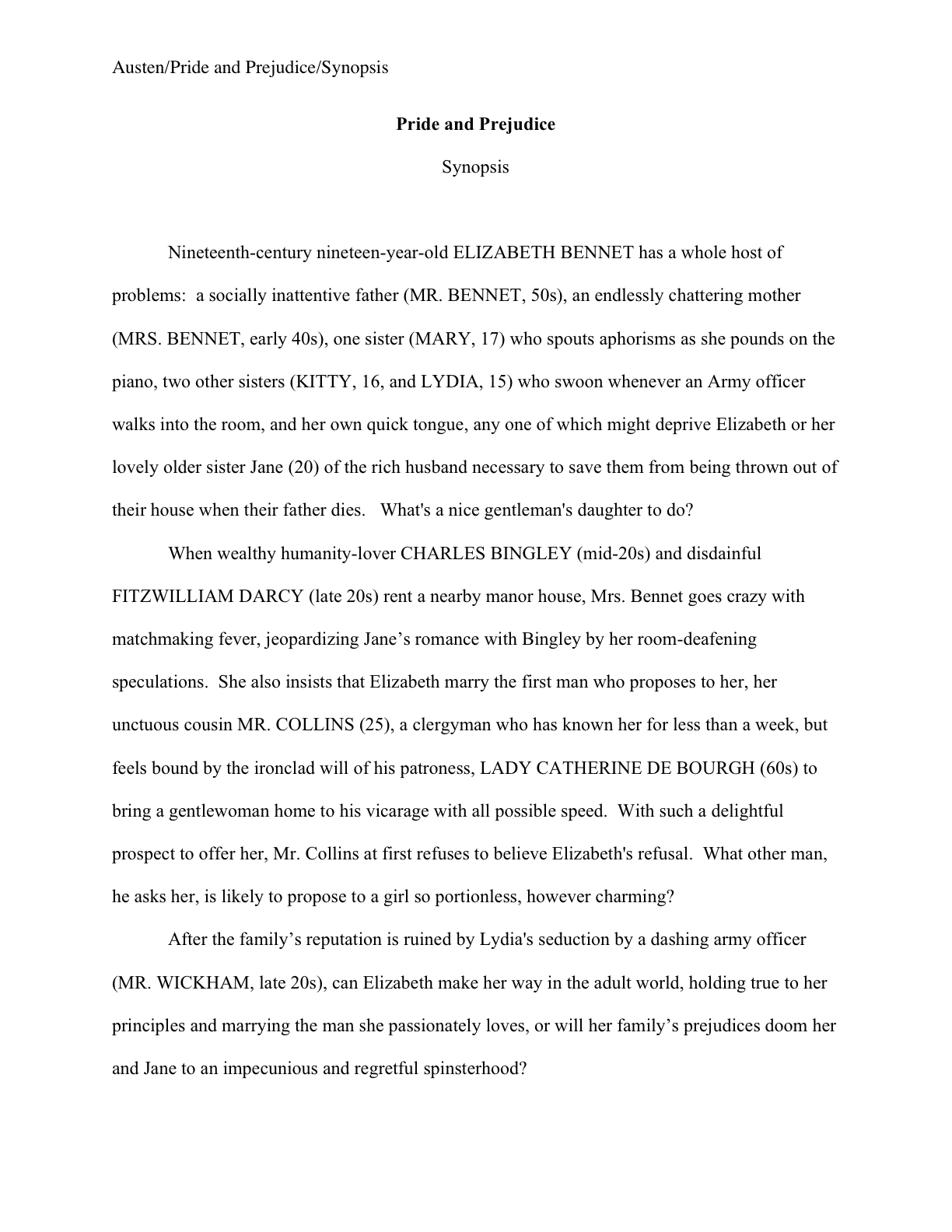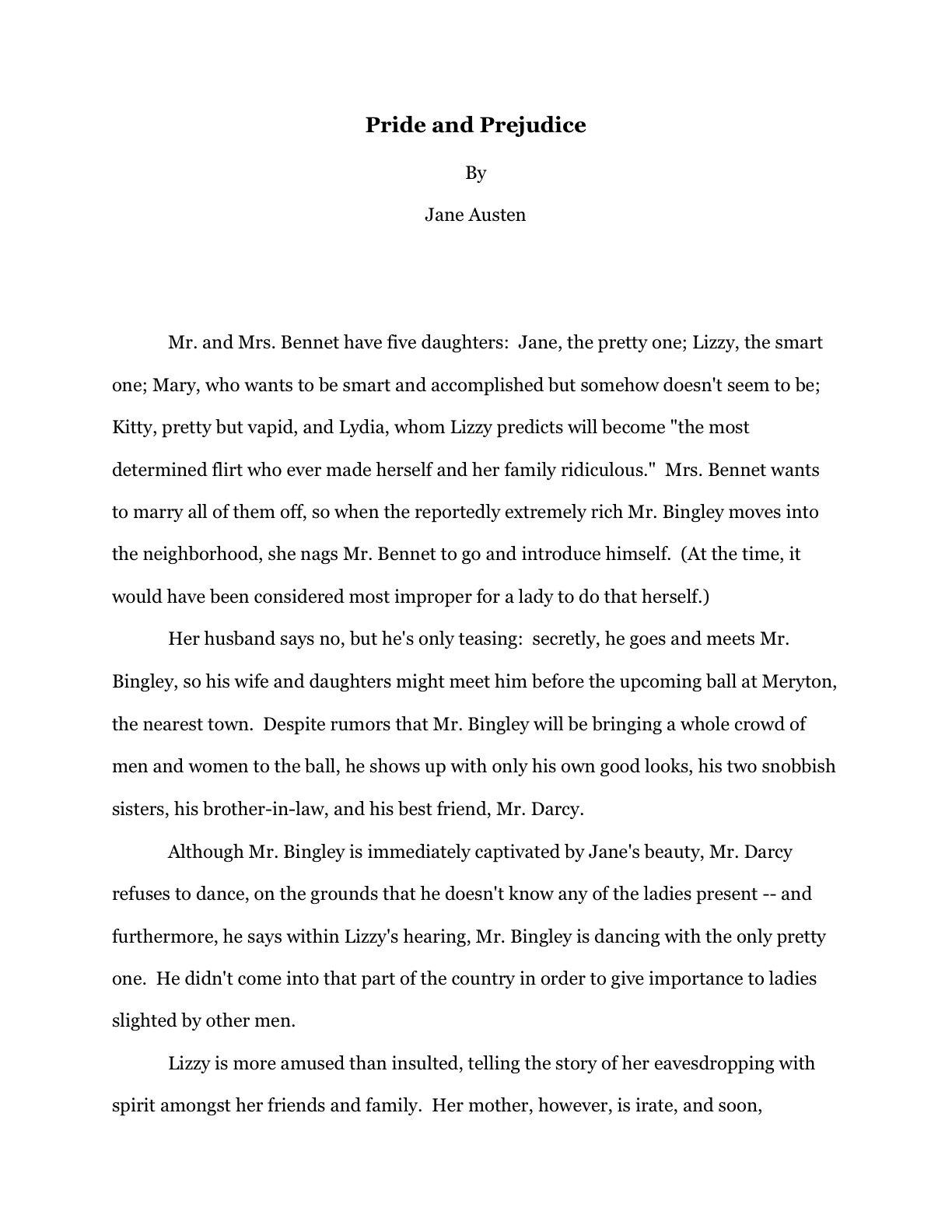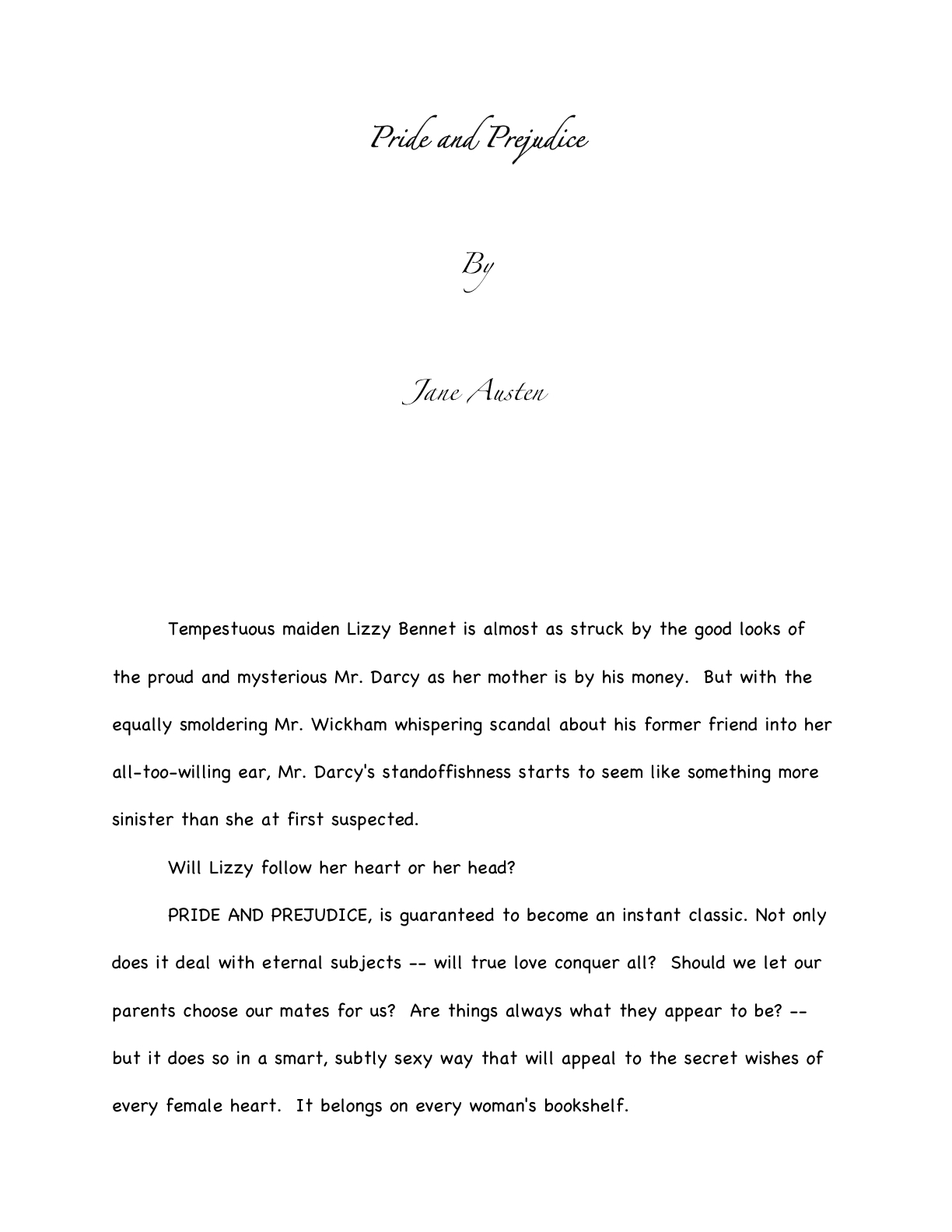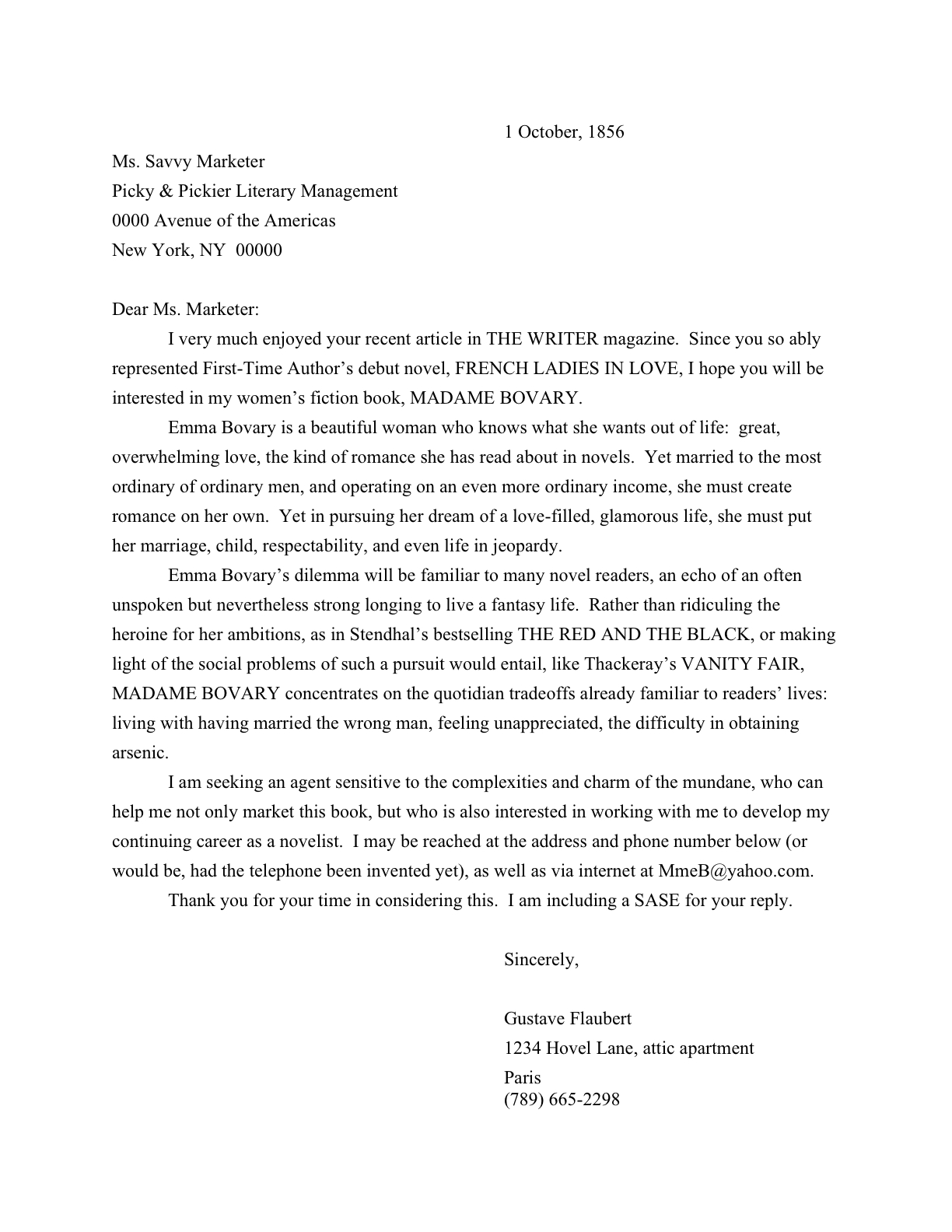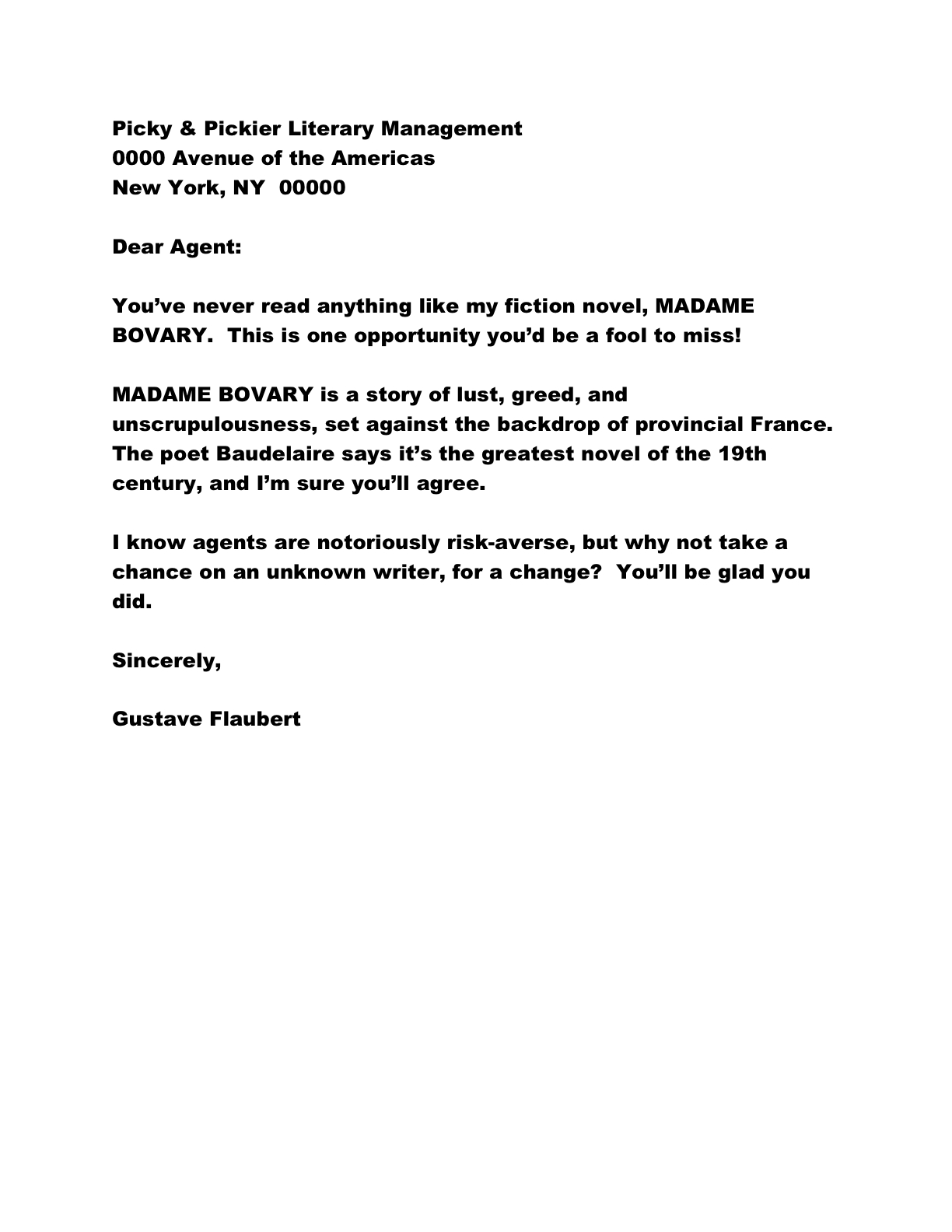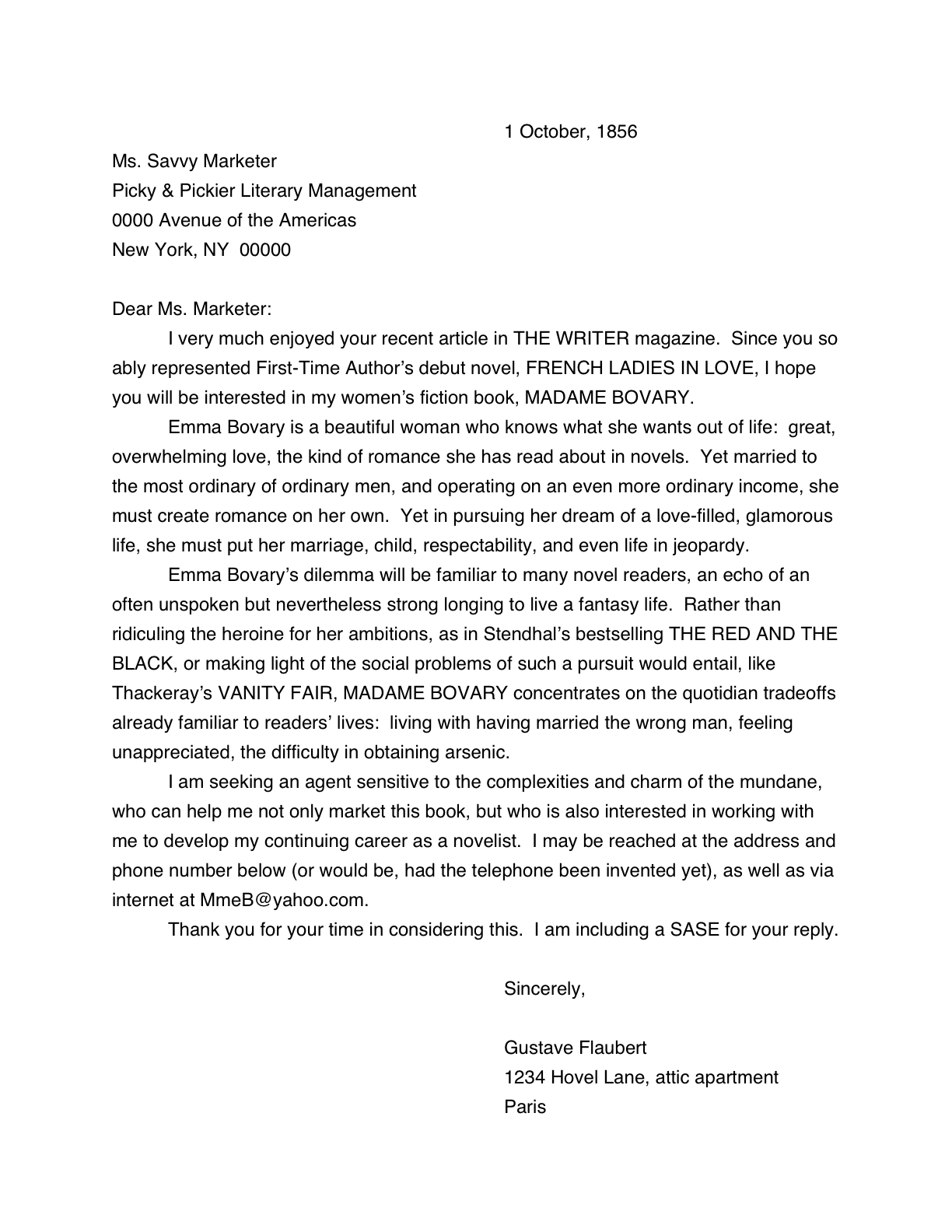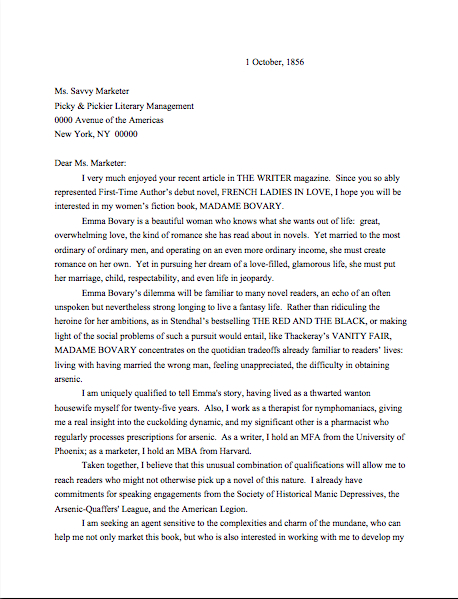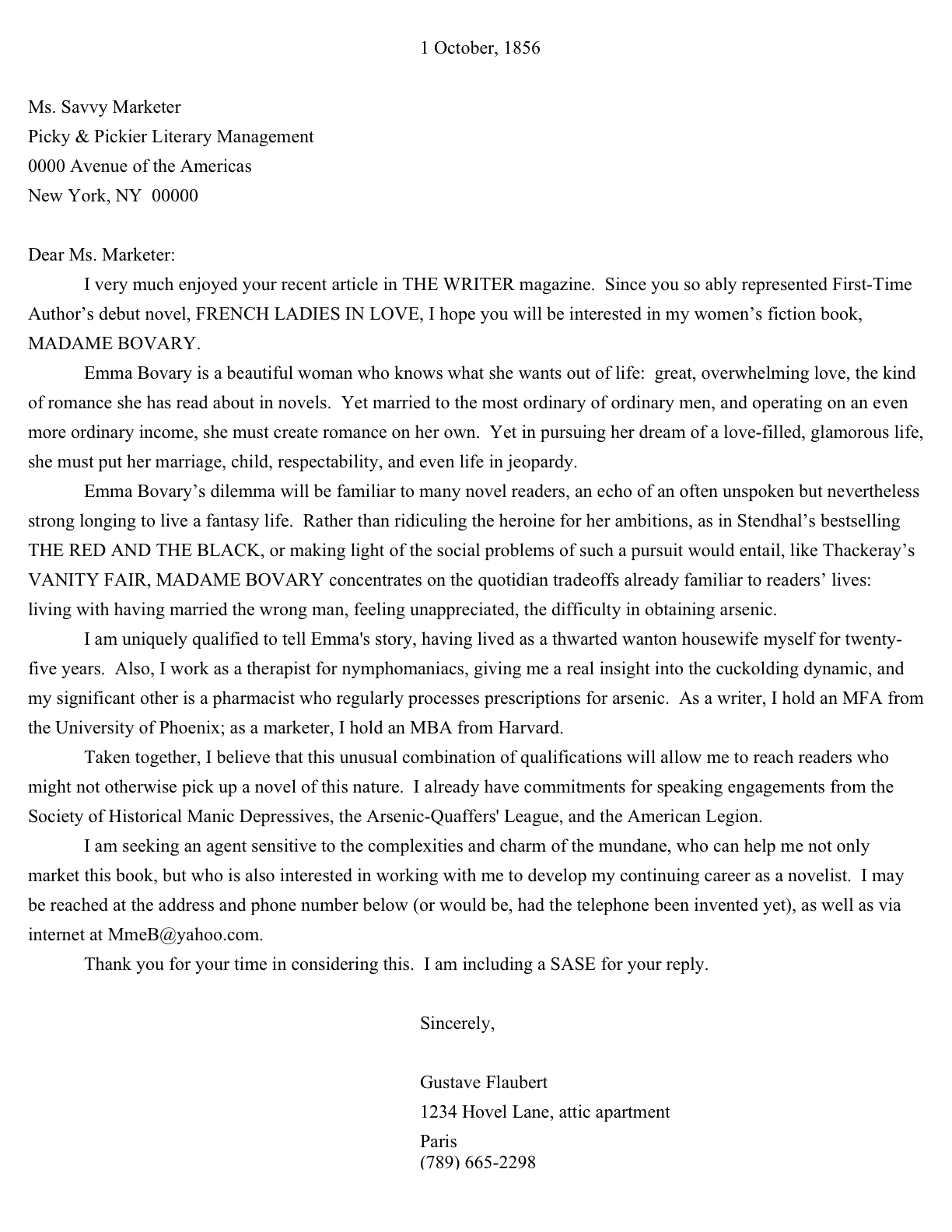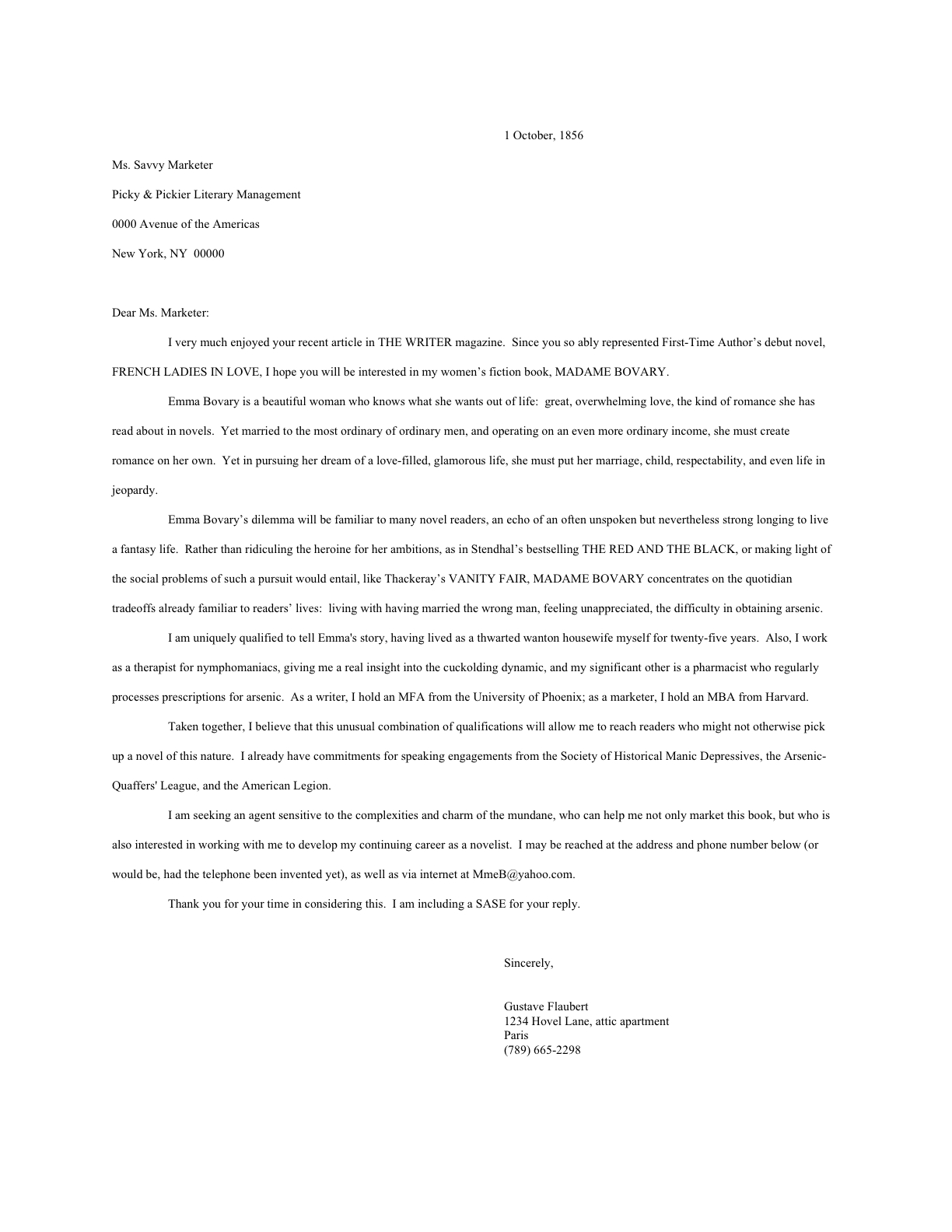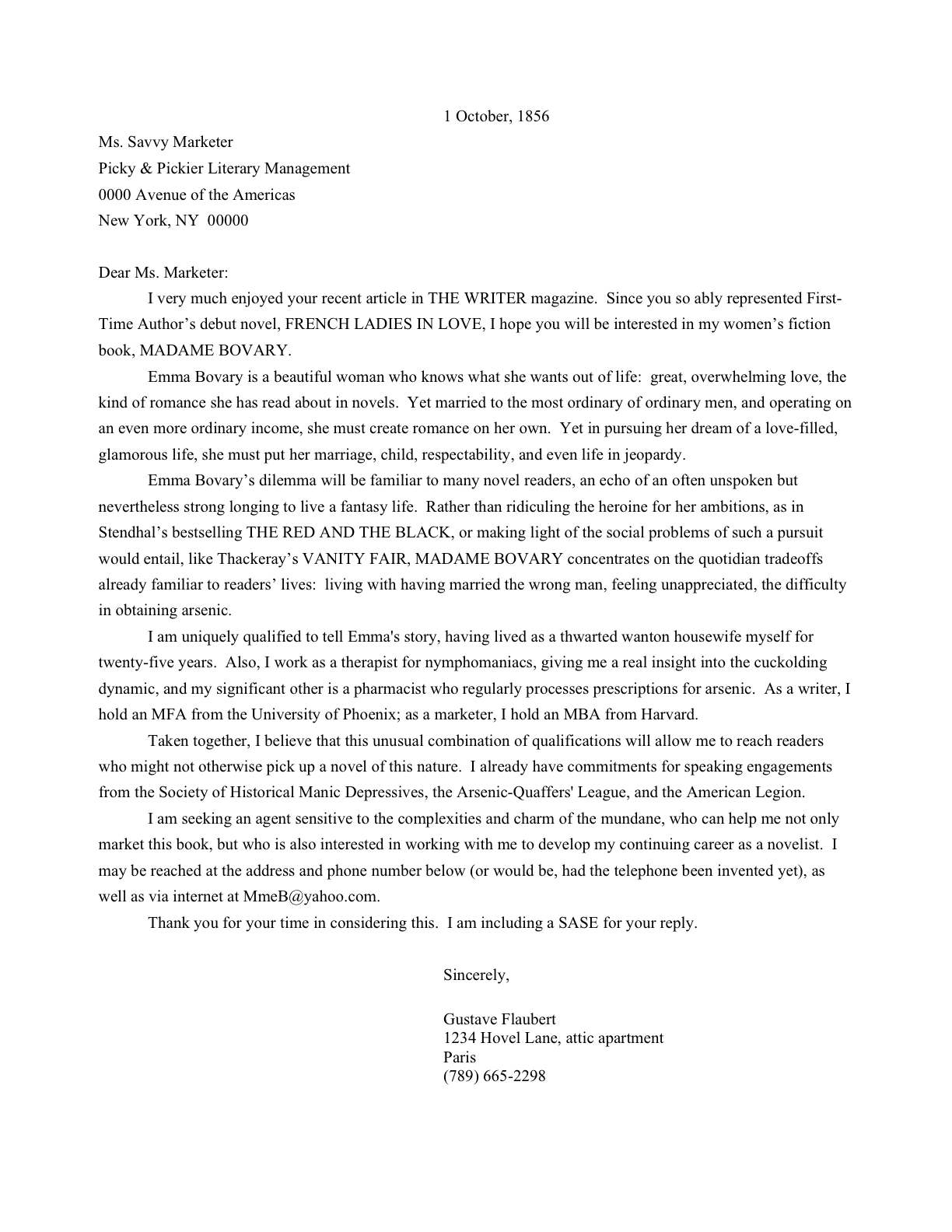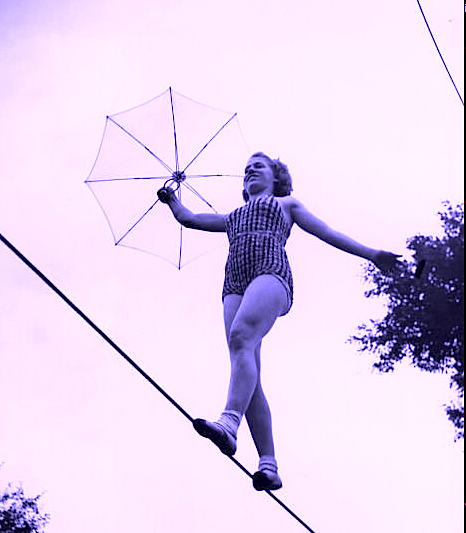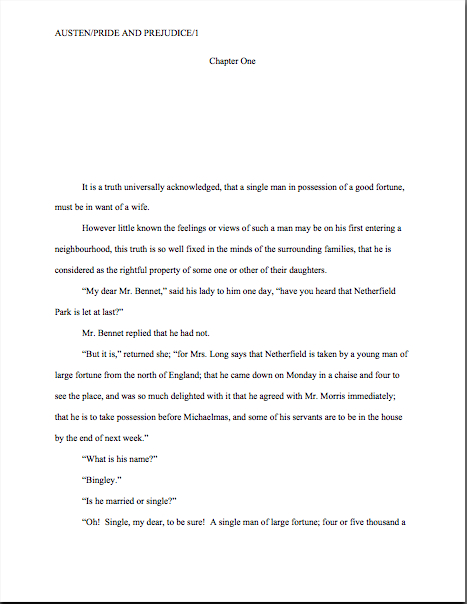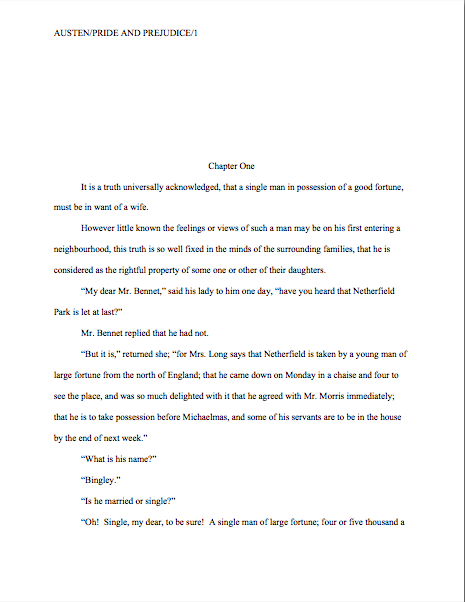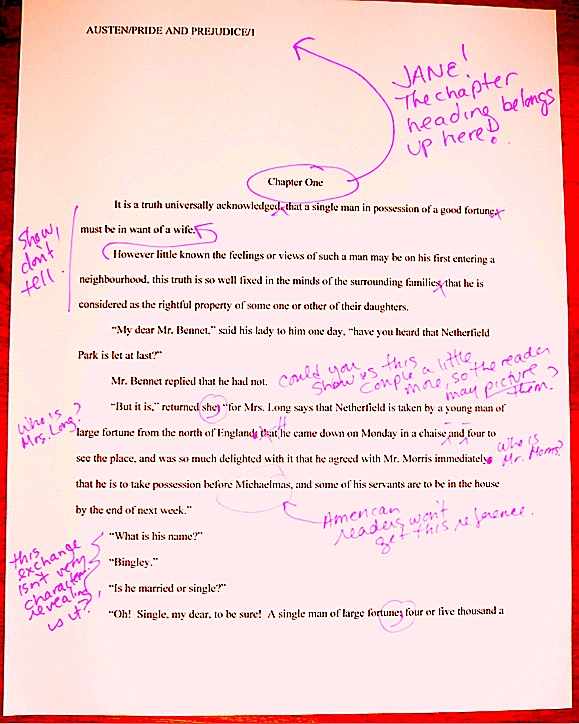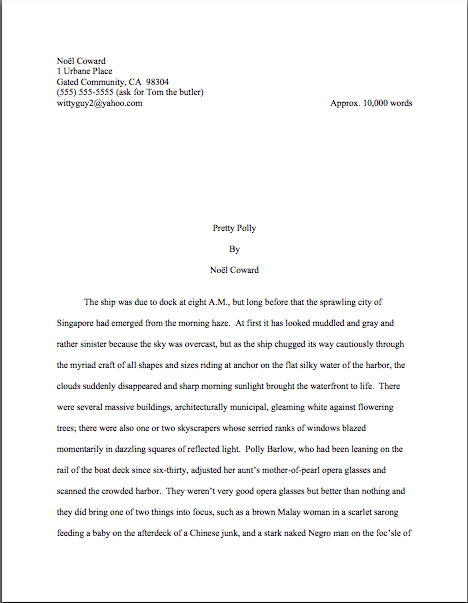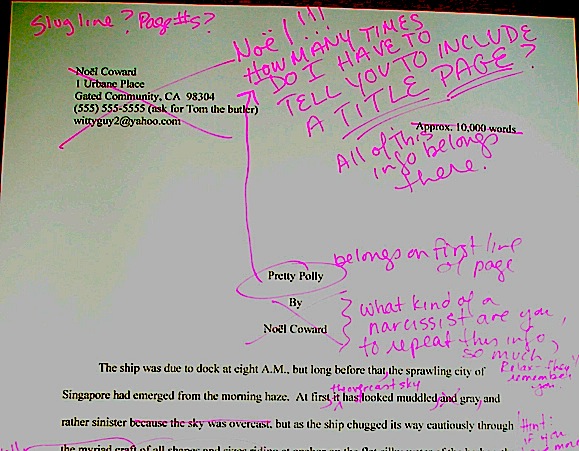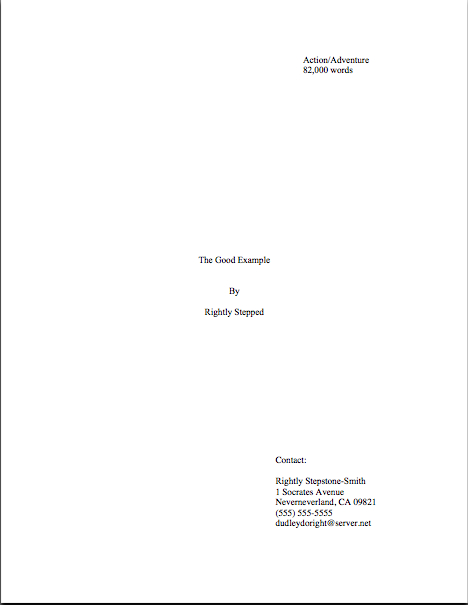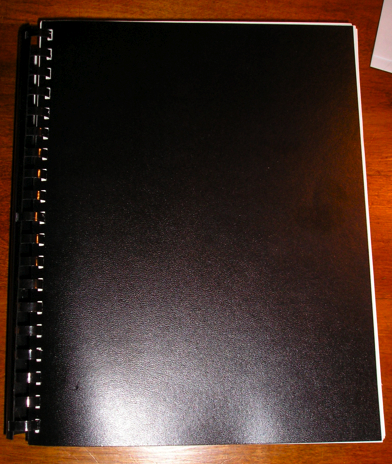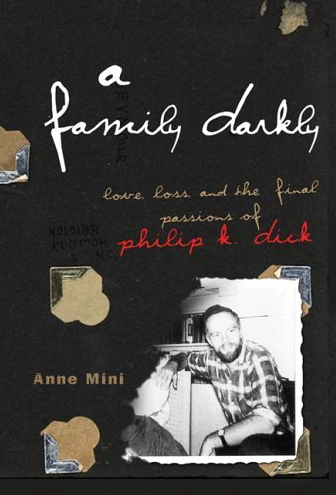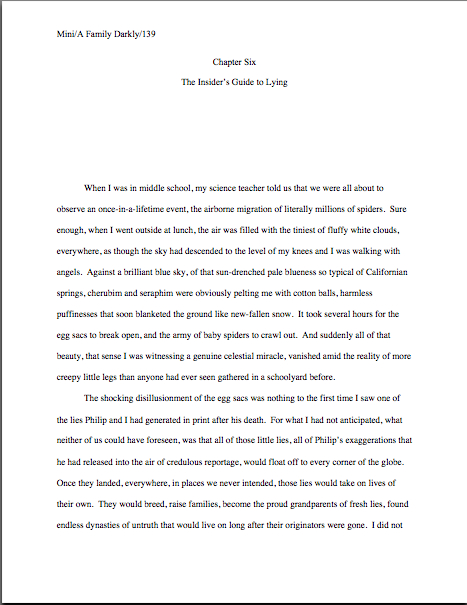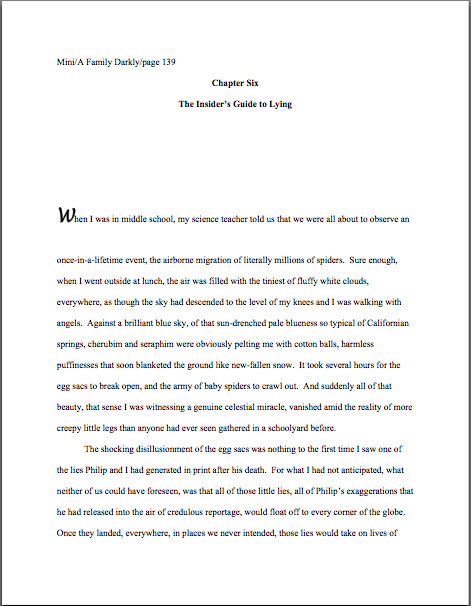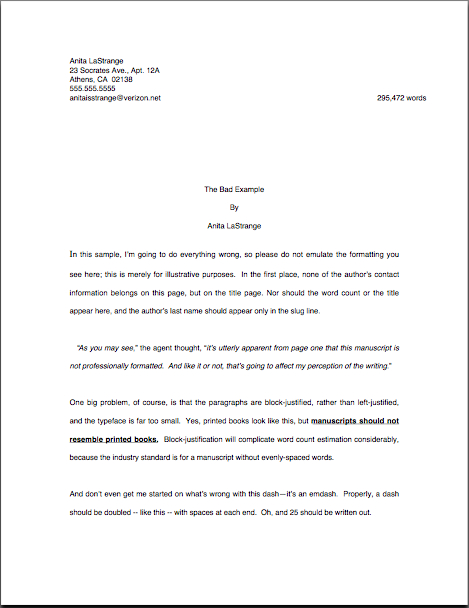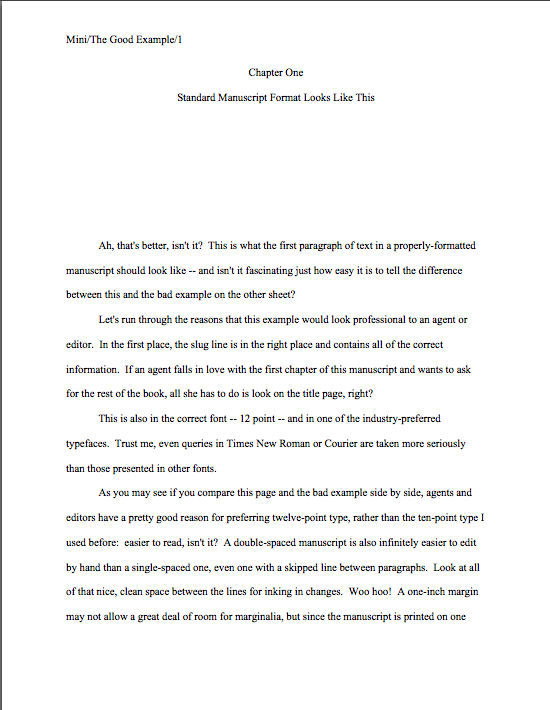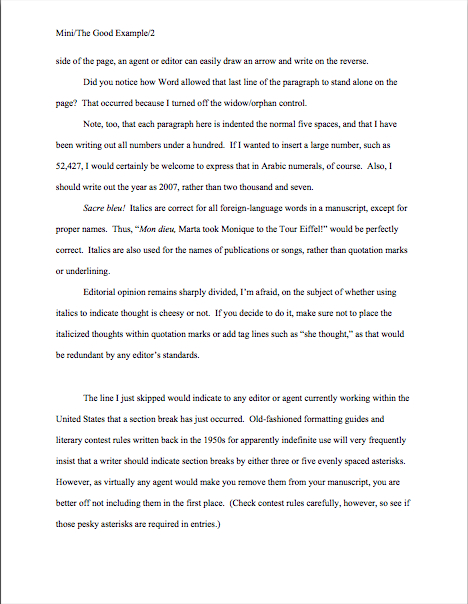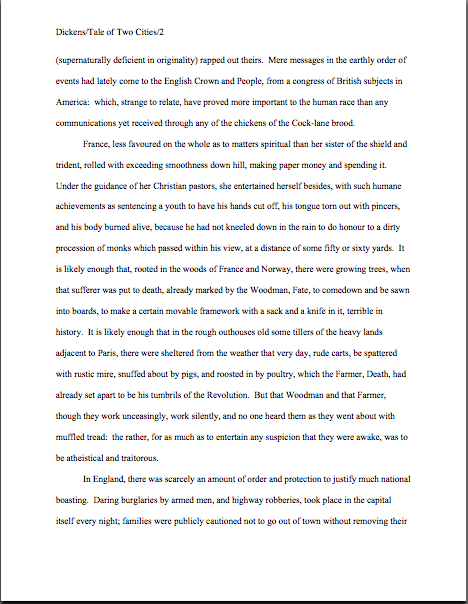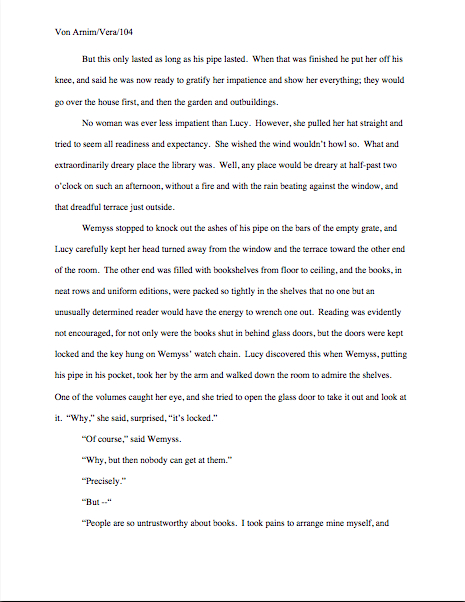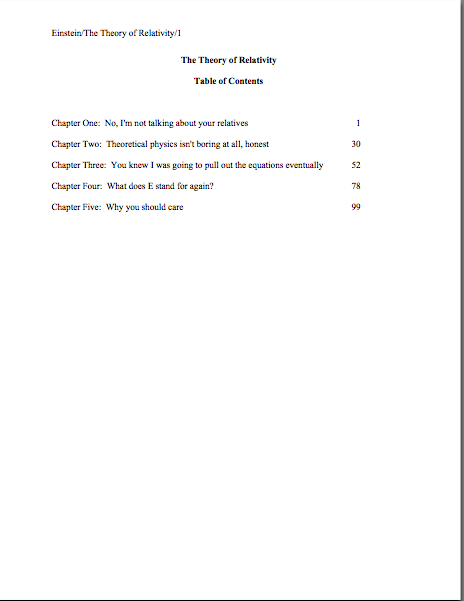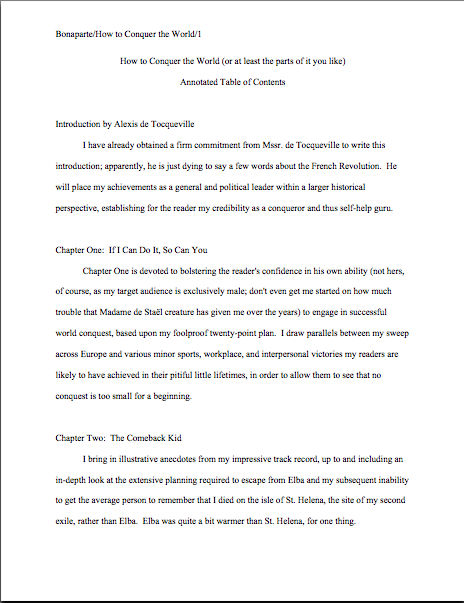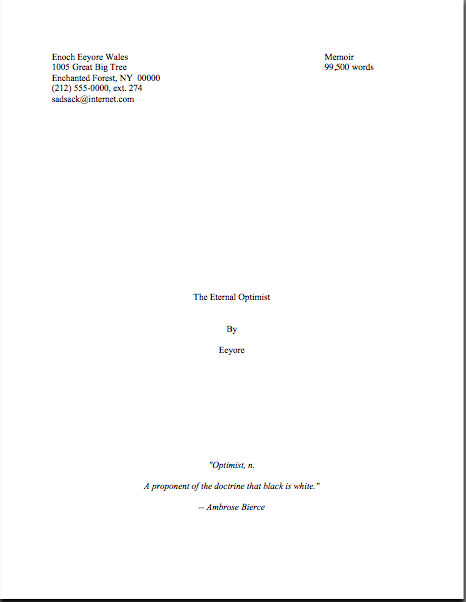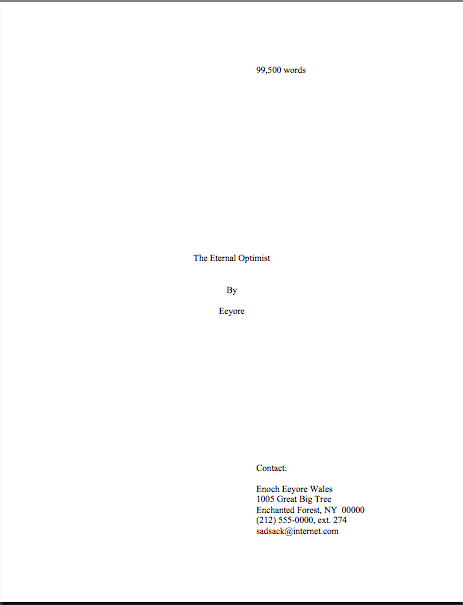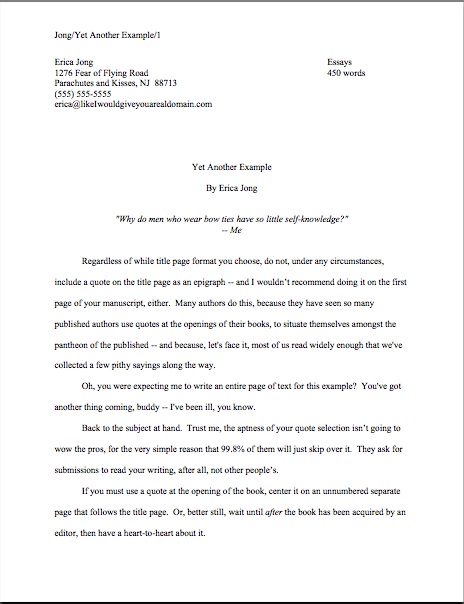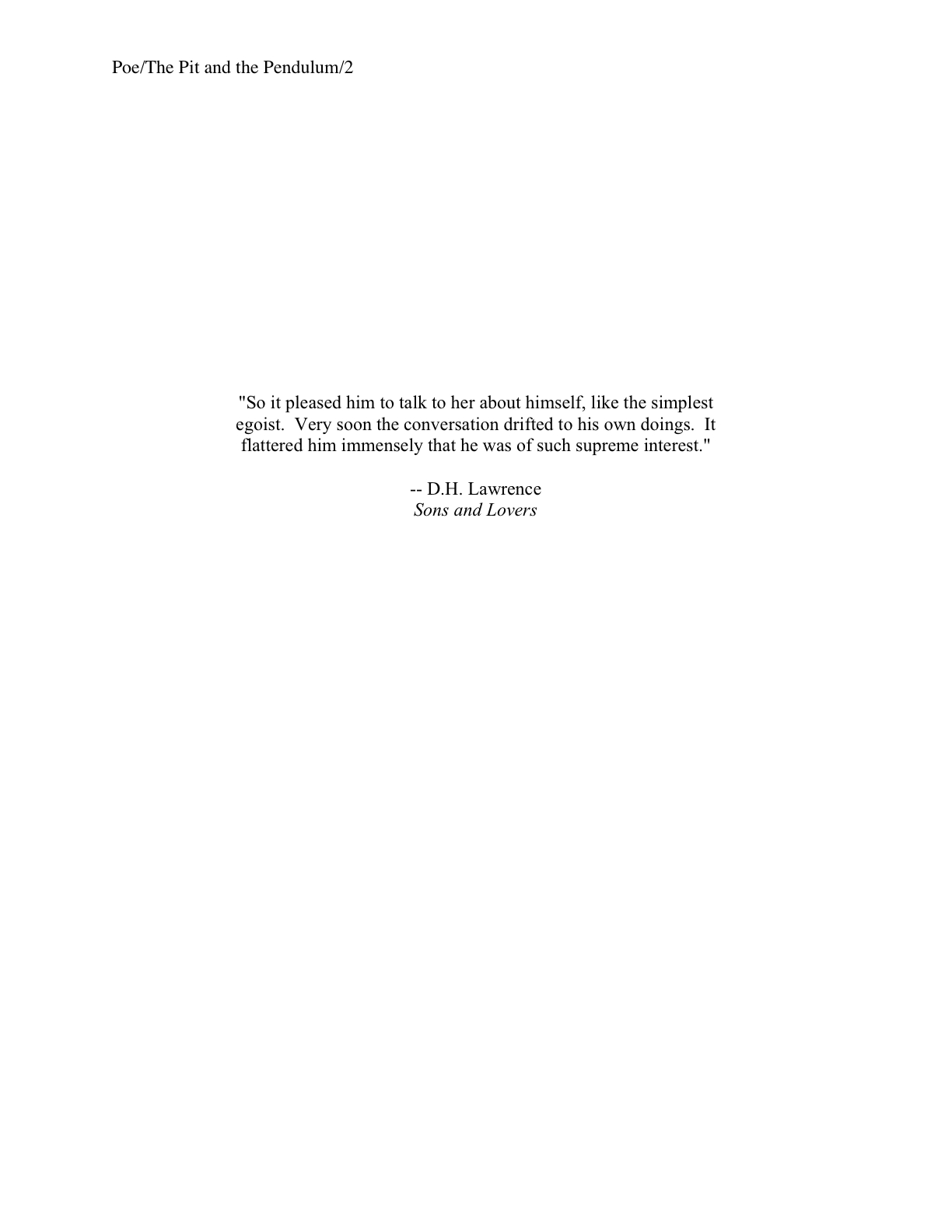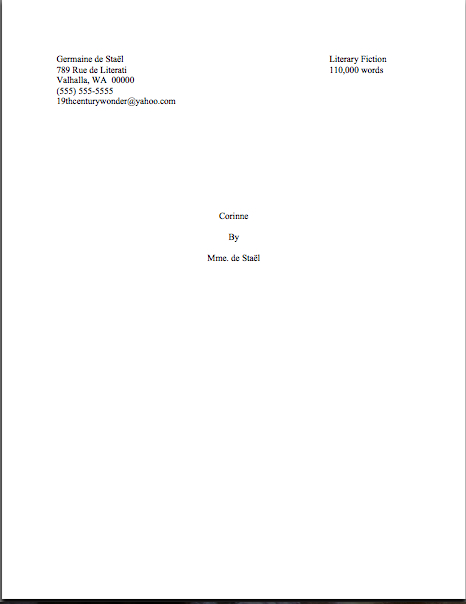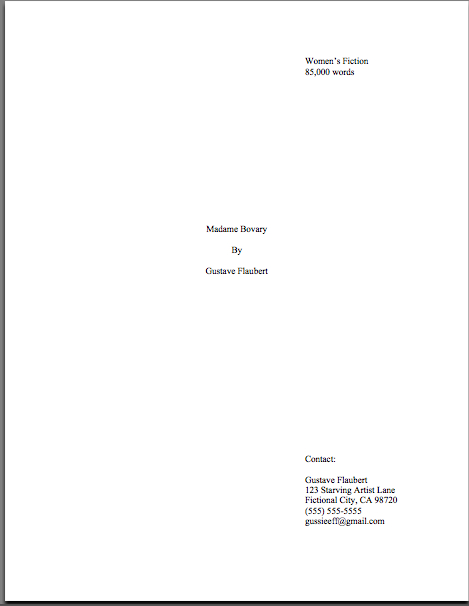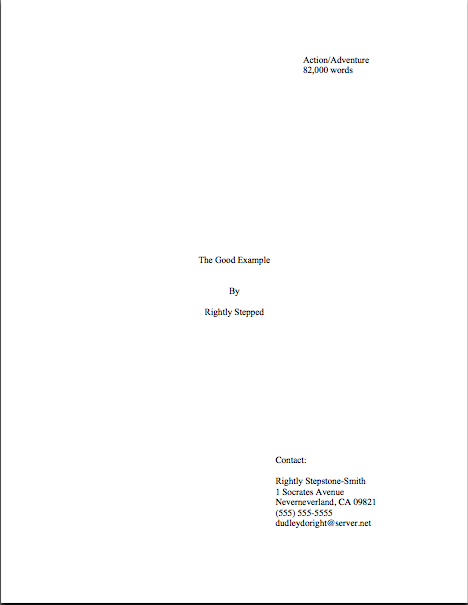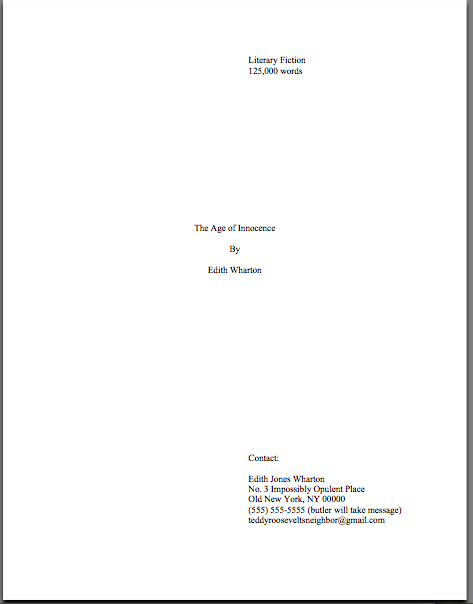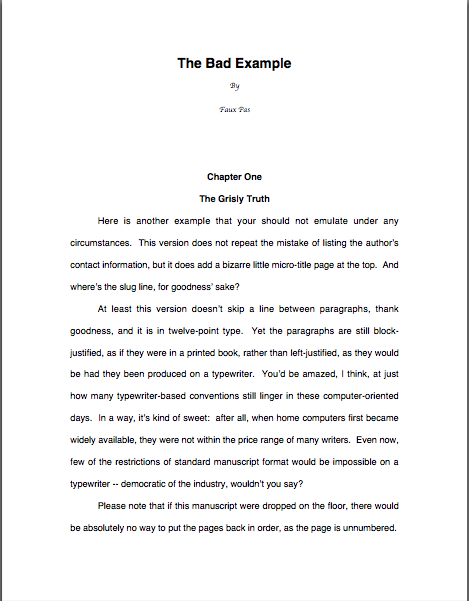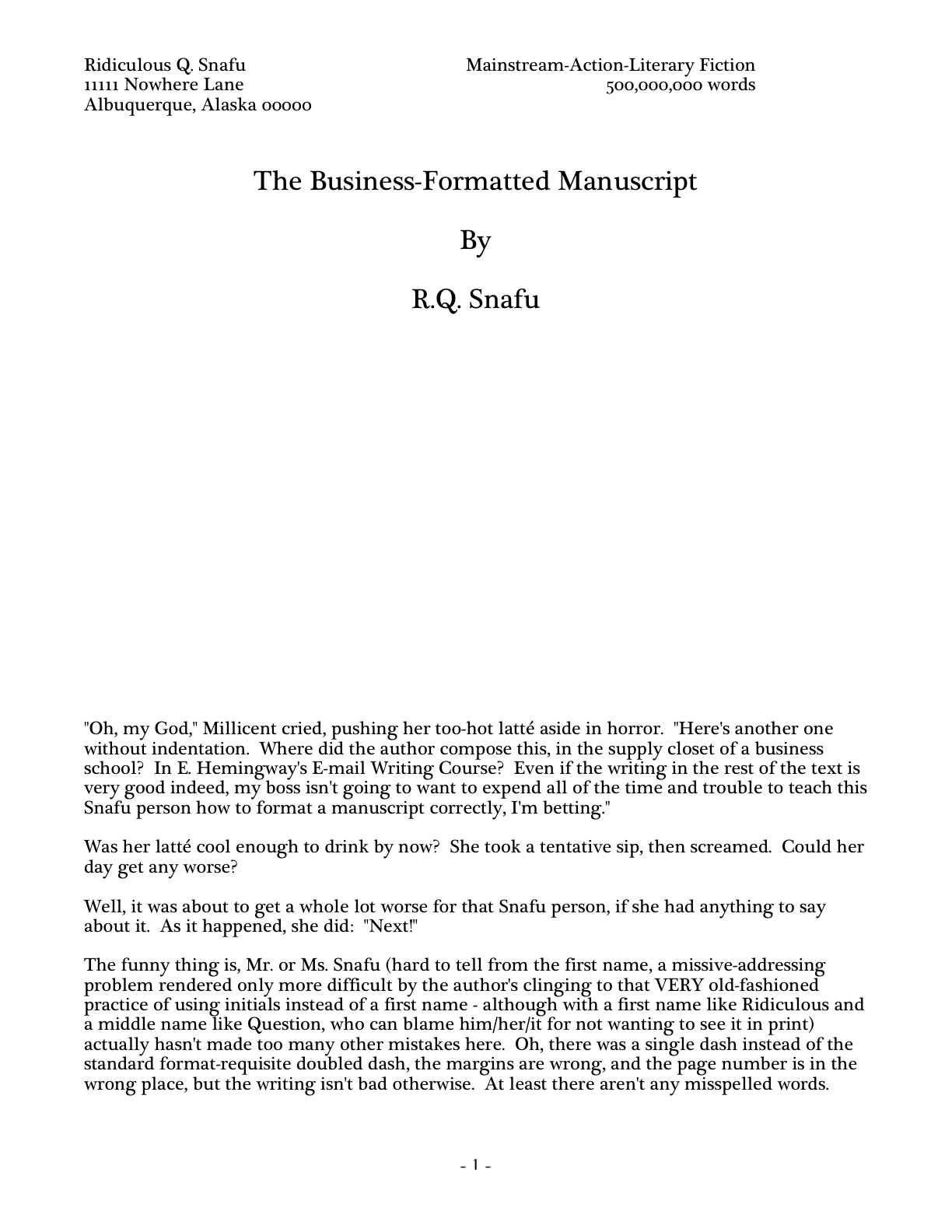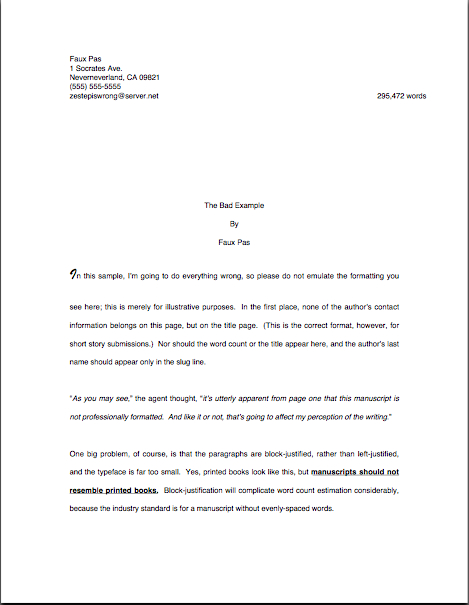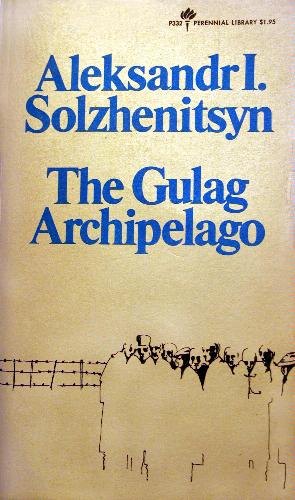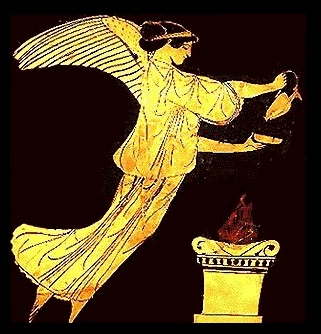
Hello again, campers –
Welcome back to my series on standard format for manuscripts. If you were previously unaware that there IS a professional standard for presenting a book, well. now you know. Kindly raise your right hand (if you have one) and repeat after me: from this day forth, as long as I shall live, I will submit my writing ONLY in standard format.
Yes, it really is that important — and that simple. If you want your submission treated professionally, it needs to look like the manuscripts already-published authors produce.
And yes, yes, I know: I harp on this quite a lot on Author! Author!, but honestly, it breaks my heart to see good writers, even great ones, making the same formatting mistakes year in and year out, getting rejected for reasons that are apparent to professional readers from halfway across the room. Obviously, competition to land an agent and get published is very intense, but I say, if you’re going to get rejected, let it be because an agent or editor legitimately disagreed with your writing choices, not because you didn’t follow the rules.
So there.
Frankly, it’s bad for writers everywhere that these rules are not more widely known. Okay, so it keeps freelance editors like me in business, but it has created a submission environment where poor formatting is generally considered a warning sign of poor WRITING to come.
By Millicent and her ilk, in any case.
And that drives conscientious aspiring writers, the ones who — like you, perhaps — have invested considerable time and sweat in learning something about the trade, completely batty. Because, like so much generalized criticism, the fine folks who take the advice most seriously tend to be the ones who need it least, I know that there are thousands of you out there who stay up nights, compulsively going over their manuscripts for the 147th time, trying to ferret out that one last bit of less-than-professional presentation.
Bless your heart, if you’re one of those. You’re helping raise aspiring writers’ collective reputation within the industry.
One quick caveat before we get started today: the standard format restrictions I’m listing here are for BOOK submissions, not for short stories, poetry, journalistic articles, academic articles, or indeed any other form of writing. For the guidelines for these, you may — and should — seek elsewhere.
Which is a gentle way of saying that the formatting and grammatical choices you see in newspapers will not necessarily work in manuscripts. AP style is different from standard format in several important respects, not the least being that in standard format (as in other formal presentations in the English language), the first letter of the first word after a colon should NOT be capitalized, since technically, it’s not the beginning of a new sentence.
I don’t know who introduced the convention of post-colon capitalization, but believe me, those of us who read the submissions of aspiring book writers for a living have mentally consigned that language subversive to a pit of hell that would make even Dante avert his eyes.
But enough about my fevered fantasies. Let’s get down to the proverbial brass tacks, shall we?
Yesterday, while scores of my long-time readers flung their hands over their eyes and screamed, “No! Not again!”, I started going over the rigors of standard formatting for manuscripts again. Please, even if you are morally certain that you know what you’re doing, take a few minutes for a refresher course.
Why? Because while submitting pages that deviate from standard format MIGHT not result in automatic rejection of otherwise fine writing, it does indeed happen – and often. And not just because our old friend Millicent the agency screener is having a bad day.
Professional-level critique is HARSH; it’s like having your unmade-up face examined under a very, very bright light by someone who isn’t afraid to hurt your feelings by pointing out flaws. In the industry, this level of scrutiny is not considered even remotely mean.
Actually, if your work generates tell-it-like-it-is feedback from a pro, you should be a bit flattered – it’s how they habitually treat professional authors.
Yet the vast majority of submitting writers seem to assume that agents and their staffs will be hugely sympathetic readers of their submissions, willing to overlook technical problems because of the quality of the writing or the strength of the story. Every so often, there is the odd exception that justifies this belief. If the writing is absolutely beautiful, or the story is drool-worthy, but the formatting is all akimbo and the spelling is lousy, there’s an outside chance that someone at an agency might be in a saintly enough mood to overlook the problems and take a chance on the writer.
You could also have a Horatio Alger moment where you find a billionaire’s wallet, return it to him still stuffed with thousand-dollar bills, and he adopts you as his new-found son or daughter.
Anything is possible, of course. But it’s probably prudent to assume, when your writing’s at stake, that yours is not going to be the one in 10,000,000 exception.
Virtually all of the time, an agent, editor, contest judge, or screener’s first reaction to an improperly-formatted manuscript is the same as to one that is dull but technically perfect: speedy rejection.
The trouble is, submitters rejected for this reason are almost never aware of it. With few exceptions, the rejecters will not even take the time to scrawl, “Take a formatting class!” or “Next time, spell-check!” on the returned manuscript. If a writer is truly talented, they figure, she’ll mend her ways and try again.
Call me zany, but I think that the way-mending might go a TRIFLE faster if the writer knew that the manuscript was broken.
I’d like to speed up that learning curve. It’s not as though the strictures of standard format are state secrets, after all. To recap from yesterday:
(1) All manuscripts should be printed or typed in black ink and double-spaced, with one-inch margins around all edges of the page, on 20-lb or better white paper.
(2) All manuscripts should be printed on ONE side of the page and unbound in any way.
(3) The text should be left-justified, NOT block-justified. By definition, manuscripts should NOT resemble published books in this respect.
(4) The preferred typefaces are 12-point Times, Times New Roman, Courier, or Courier New — unless you’re writing screenplays, in which case you may only use Courier.
One last word on point #4 before I move on: if you want a specific font for your finished book that ISN’T one of these, you should NOT use it in your manuscript. No, not even if you found a very cool way to make your Elvin characters’ dialogue show up in Runic.
Like choices about italicization, bolding, and whether to use a medieval-style fancy first letter at the beginning of each chapter, the typeface ultimately used in the published book is a matter of discussion between you and your future editor — or, even more frequently, a decision made by the publishing house without any authorial input at all.
Oops, I guess I didn’t need to leap on this point yesterday. Oh, well, it bears repeating, since so few aspiring writers seem to be aware of it.
If you try to illustrate the fabulousness of your desired typeface now, you run the risk of your manuscript being dismissed as unprofessional. Don’t. Save it for later discussion.
(5) No matter how cool your desired typeface looks, or how great the title page looks with 14-point type, keep the ENTIRE manuscript in the same font and size.
Industry standard is 12-point. Again, no exceptions, INCLUDING YOUR TITLE PAGE, where almost everyone gets a little wacky the first time out. No pictures or symbols here, either, please. Just the facts.
I hate to be the one to break it to you, but there’s a term in the industry for title pages with 24-point fonts, fancy typefaces, and illustrations.
It’s “high school book report.”
(6) Do NOT use boldface anywhere in the manuscript BUT on the title page — and not even there, necessarily.
Yes, you read that correctly: you may place your title in boldface on the title page, if you like, but that’s it. Nothing else in the manuscript should be in bold.
This is a throwback to the old typewriter days, where only very fancy machines indeed could darken selected type. Historically, using bold in-text is considered a bit tacky for the same reason that wearing white shoes before Memorial Day is in certain circles: it’s a subtle display of wealth.
(You didn’t think all of those white shoes the Victorians wore cleaned themselves, did you? Shiny white shoes equaled scads of busily-polishing staff.)
(7) EVERY page in the manuscript should be numbered EXCEPT the title page.
Violating of this rule will result in instantaneous rejection virtually everywhere. Number those pages if it’s the last thing you do.
Few non-felonious offenses irk the professional manuscript reader (including yours truly, if I’m honest about it) more than an unnumbered submission — it ranks right up there on their rudeness scale with assault, arson, and beginning a query letter with, “Dear Agent.”
Why? Gravity, my friends, gravity. What goes up tends to come down — and if the object in question happens to be an unbound stack of paper…
Picture, if you will, two manuscript-bearing interns colliding in an agency hallway. (You may giggle, but anyone who has ever worked with submissions has first-hand experience of this.) After the blizzard of flying papers dies down, and the two combatants rehash that old Reese’s Peanut Butter Cup commercial’s dialogue (“You got romance novel in my literary fiction!” “You got literary fiction in my romance novel!”), what needs to happen?
Yup. Some luckless soul has to put all of those pages back in the proper order. Just how much more irksome is that task going to be if the pages are not numbered?
Trust me, it is far, far, FAR easier to toss the entire thing into the reject pile than to spend the hours required to guess which bite-sized piece of storyline belongs before which. Number your pages.
The first page of the text proper, incidentally, is page 1 of the text, not the title page, and should be numbered as such. If your opus has an introduction or preface, the first page of THAT is page 1, not the first page of chapter 1.
Why, you ask? Long-time readers, chant it with me now, please: BECAUSE A MANUSCRIPT SHOULD NOT LOOK IDENTICAL TO A PUBLISHED BOOK.
To run over the other most popular choices for pages to mislabel as page 1: manuscripts do not contain tables of contents, so there should be no question of pagination for that. Also, epigraphs — those quotations from other authors’ books so dear to the hearts of writers everywhere — should not appear on their own page in a manuscript, as they sometimes do in published books; if you feel you must include one (considering that 99.9999% of the time, Millicent will just skip over it), include it between the chapter title and text on page 1.
If that last sentence left your head in a whirl, don’t worry — I’ll show you how to format epigraphs properly later in this series. Yes, including some discussion of that cryptic comment about Millicent.
(8) Each page of the manuscript (other than the title page) should have a standard slug line in the header. The page number should appear in the slug line, not anywhere else on the page.
Most writing handbooks and courses tend to be a trifle vague about this particular requirement, so allow me to clarify: a well-constructed slug line includes the author’s last name, book title, and page number, to deal with that intern-collision problem I mentioned earlier. And the header, for those of you who have not yet surrendered to Microsoft Word’s lexicon, is the 1-inch margin at the top of each page.
This means, in effect, that every page of the manuscript has the author’s name on it — a great idea, should you, say, want an agent or editor to be able to contact you after s/he’s fallen in love with it.
The slug line should appear in the upper left-hand margin (although no one will sue you if you put it in the upper right-hand margin, left is the time-honored location) of every page of the text EXCEPT the title page (which should have nothing in the header or footer at all).
Traditionally, the slug line appears all in capital letters, but it’s not strictly necessary. Being something of a traditionalist, the third page of my memoir has a slug line that looks like this:
MINI/A FAMILY DARKLY/3
Since the ONLY place a page number should appear on a page of text is in the slug line, if you are in the habit of placing numbers wacky places like the middle of the footer, do be aware that it does not look strictly professional to, well, professionals. Double-check that your word processing program is not automatically adding extraneous page markers.
Do not, I beg of you, yield like so many aspiring writers to the insidious temptation add little stylistic bells and whistles to the slug line, to tart it up. Page numbers should not have dashes on either side of them, be in italics or bold, or be preceded by the word “page.” The point here is not to make your slug line stand out for its innovative style, but for your manuscript’s pages to look exactly like every other professional writer’s.
If you have a very long title, feel free to abbreviate, to keep the slug line from running all the way across the top of the page. (Technically, a slug line should be 30 spaces or less, but there’s no need to stress about that in the computer age. A slug, you see, is the old-fashioned printer’s term for a pre-set chunk of, you guessed it, 30 spaces of type.) For example, my agent is currently circulating a novel of mine entitled THE BUDDHA IN THE HOT TUB — 26 characters, counting spaces. Since my last name is quite short, I could get away with putting it all in the slug line, to look like this:
MINI/THE BUDDHA IN THE HOT TUB/1
If, however, my last name were something more complicated, such as Montenegro-Copperfield — 22 characters all by itself, including dash — I might well feel compelled to abbreviate:
MONTENEGRO-COPPERFIELD/BUDDHA/1
(9) The first page of each chapter should begin a third of the way down the page, with the chapter title appearing on the FIRST line of the page, NOT on the line immediately above where the text begins.
That’s twelve single-spaced lines, incidentally. The chapter name (or merely “Chapter One”) may appear on the FIRST line of the first page — not on the last line before the text, as so many writers mistakenly do. The chapter title or number should be centered, and it should NOT be in boldface or underlined. Don’t panic if you’re having trouble visualizing this — I’ll be giving concrete examples of what the first page of a chapter should look like later in this series.
Why shouldn’t the title appear immediately above the text, as one so often sees? Because that’s where the title of a SHORT STORY lives. I’ve literally never seen a professional book manuscript formatted this way.
Very frequently, agents, editors and contest judges are presented with improperly-formatted first pages that include the title of the book, “by Author’s Name,” and/or the writer’s contact information in the space above the text. This is classic rookie mistake. To professional eyes, a manuscript that includes any of this information on the first page of the manuscript (other than in the slug line, of course) seems term paper-is.
So where does all of that necessary contact information go, you ask? Read on.
(10) Contact information for the author belongs on the title page, NOT on page 1.
This is one of the main differences between a short story submission (say, to a literary journal) and a novel submission. To submit a manuscript — or contest entry, for that matter — with this information on page 1 is roughly the equivalent of taking a great big red marker and scrawling, “I don’t know much about the business of publishing,” across it. Just don’t do it.
“But wait,” I hear some of you out there murmuring, “I need a title page? Since when?”
Funny you should mention that, because…
(11) Every submission should include a title page, even partial manuscripts.
This one seems to come as a surprise to a LOT of aspiring writers. You should ALWAYS include a title page with ANY submission of ANY length, including contest entries and the chapters you send after the agent has fallen in love with your first 50 pages.
It is genuinely unheard-of for a professional manuscript not to have a title page: literally every manuscript that any agent in North America sends to any editor will include one. Yet, astonishingly, 95% of writers submitting to agencies seem to be unaware that including it is industry standard.
On the bright side, this means that if you are industry-savvy enough to include a professionally-formatted title page with your work, your submission automatically looks like a top percentile ranker to professional eyes from the moment it’s pulled out of the envelope. It’s never too early to make a good first impression, right?
If you do not know how to format a proper title page (and yes, Virginia, there IS a special format for it, too), please see the Your Title Page category at right. Or wait a few days until I cover it later in this series. Up to you.
Before anyone says it: omitting a title page is too common a mistake to be an automatic deal-breaker — and yes, one does occasionally meet an agent at a conference or one blogging online who says she doesn’t care one way or the other about whether a submission has a title page resting on top. Bully for them for being so open-minded, but even these are not going to toss out a submission BECAUSE it has a properly-formatted title page.
As I point out roughly 127,342 times per year in this forum, how can you be sure that the person deciding whether to pass your submission upstairs or reject it ISN’T a stickler for professionalism?
I’m going to sign off for today, but I hope to finish up the rules of standard format next time, so we may move on to practical examples of what a professional manuscript looks like. Believe me, as tedious as it is to change these things in your manuscript now, by the time you’re on your third or fourth book, it will be second nature to you.
Why, I’ll bet that the next time you sit down to begin a new project, you will automatically format it correctly.
And, more importantly, any submissions you might happen to send out in the near future will look like the work of a pro. Again, call me zany, but I would rather see an agent or editor evaluate your book on the basis of your writing and your story, not your formatting knowledge.
I’m funny that way. Keep up the good work!


